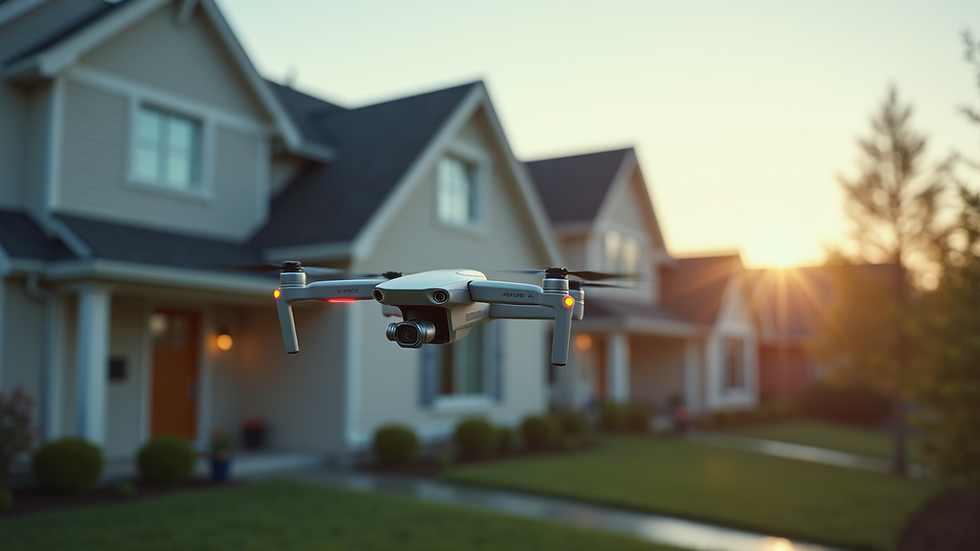How Video Marketing is Revolutionizing Real Estate
- Kent Shore

- Jul 28
- 3 min read
In today's fast-paced digital world, real estate marketing has evolved dramatically. Traditional methods like print ads and static photos are no longer enough to capture buyers' attention. Instead, real estate videos have become a powerful tool to showcase properties in a dynamic and engaging way. This transformation is reshaping how agents, sellers, and buyers interact with the market.
The Power of Real Estate Videos in Property Marketing
Real estate videos offer a unique advantage by providing a virtual tour experience that photos simply cannot match. They allow potential buyers to visualize the space, layout, and ambiance of a property from the comfort of their own home. This immersive experience helps buyers make quicker and more informed decisions.
Some key benefits of using real estate videos include:
Increased engagement: Videos keep viewers interested longer than photos or text.
Better storytelling: Videos can highlight a property's best features with music, narration, and smooth transitions.
Wider reach: Videos are highly shareable on social media platforms, increasing exposure.
Higher conversion rates: Listings with videos tend to sell faster and at higher prices.
For example, a well-produced video tour can showcase a home's spacious kitchen, natural lighting, and neighborhood amenities, creating an emotional connection with buyers.

Creating Effective Real Estate Videos That Sell
To maximize the impact of real estate videos, it’s important to focus on quality and content. Here are some practical tips for creating videos that attract buyers:
Plan your shots: Start with an exterior shot, then move inside to highlight key rooms like the kitchen, master bedroom, and living areas.
Use good lighting: Natural light works best. Shoot during the day and open curtains to brighten rooms.
Keep it steady: Use a gimbal or tripod to avoid shaky footage.
Add narration or captions: Explain features and benefits to guide viewers through the property.
Include neighborhood highlights: Show nearby parks, schools, and shopping centers to add value.
Keep it short: Aim for 2-3 minutes to maintain viewer interest.
Additionally, incorporating real estate drone videos can provide stunning aerial views of the property and surrounding area. This perspective is especially useful for large estates, waterfront properties, or homes with unique landscaping.

How much do drone pilots make for real estate?
The demand for drone pilots in real estate has grown significantly as aerial footage becomes a standard in property marketing. Drone pilots typically charge based on the size of the property, complexity of the shoot, and post-production work.
Average rates: Drone pilots can earn anywhere from $150 to $500 per shoot.
Factors influencing pay: Location, experience, and equipment quality affect pricing.
Additional services: Editing, color correction, and adding music or voiceovers may increase fees.
For real estate professionals, hiring a skilled drone pilot can be a worthwhile investment. The enhanced visuals often lead to faster sales and higher offers, offsetting the cost of the service.

Integrating Video Marketing into Your Real Estate Strategy
To fully leverage the benefits of real estate videos, integrate them into your overall marketing plan:
Website: Embed videos on your listings page to engage visitors.
Social media: Share videos on platforms like Facebook, Instagram, and YouTube to reach a broader audience.
Email campaigns: Include video links in newsletters to keep potential buyers informed.
Virtual open houses: Host live video tours to interact with buyers in real time.
Paid ads: Use video ads to target specific demographics and locations.
By combining these tactics, you create a comprehensive approach that maximizes visibility and buyer interest.
Future Trends in Real Estate Video Marketing
The future of real estate marketing is bright with video technology advancing rapidly. Some emerging trends include:
360-degree virtual tours: Allow buyers to explore properties interactively.
Augmented reality (AR): Enable buyers to visualize furniture and decor in empty spaces.
Live streaming: Real-time tours and Q&A sessions with agents.
AI-powered video editing: Automated tools to create professional videos quickly.
Staying ahead of these trends will help real estate professionals maintain a competitive edge and meet evolving buyer expectations.
Real estate videos are no longer optional but essential in today’s market. They provide a compelling way to showcase properties, engage buyers, and close deals faster. Whether you’re a seller, agent, or marketer, embracing video technology can transform your real estate business and open new opportunities for success.




Comments